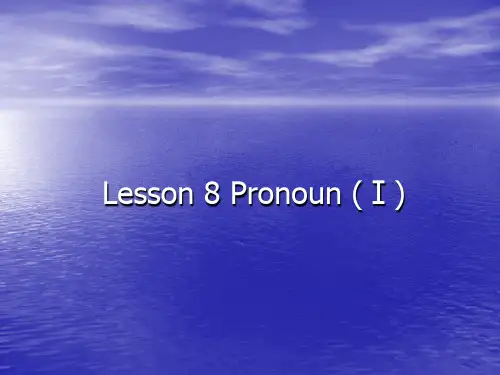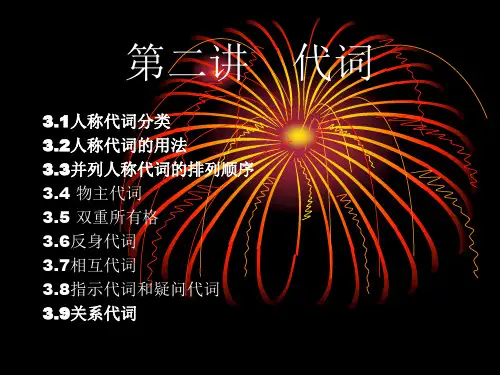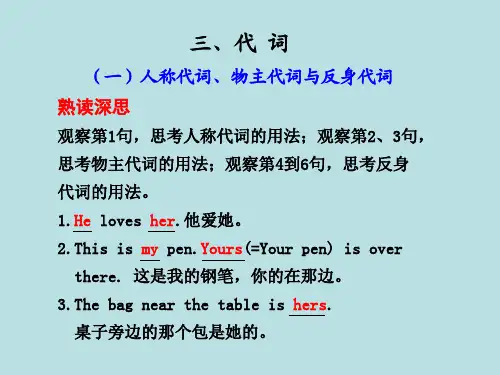名词和形容词,在句中作主语、宾语、 表语和定语, 但none和由some, any,no等构成的复合不定代词只能 作主语、宾语或表语;every和no只 能作定语。
• 如: --- Do you have a car? --你有
一辆小汽车吗?
--- Yes,I have one. --是的, 我有一辆
第二讲 代词
3.1人称代词分类 3.2人称代词的用法 3.3并列人称代词的排列顺序 3.4 物主代词 3.5 双重所有格 3.6反身代词 3.7相互代词 3.8指示代词和疑问代词 3.9关系代词
3.1人称代词分类
• 代词是代替名词的一种词类。大 多数代词具有名词和形容词的功 能。英语中的代词,按其意义、 特征及在句中的作用分为:人称 代词、物主代词、指示代词、自 身代词、相互代词、疑问代词、 关系代词和不定代词八种。
these, those, some, any,
several, no, each, every, such, another, which等词一起前置,修饰 一个名词,而必须用双重所有格。
公式为: a, an, this, that +名词+of +名词 性物主代词。如:
a friend of mine.
us you them them them
如:He is my friend. 他是我的朋友。 It's me. 是我。
• 二、 物主代词表示所有关系的代词,也可叫 做代词所有格。
• 物主代词分形容性物主代词和名词性物 主代词二种,其人物和数的变化: 形容词性 my your his/her its our your/their 名词性 mine yours his/hers its ours yours/theirs eg. I like his car. 我喜欢他的小汽车。










